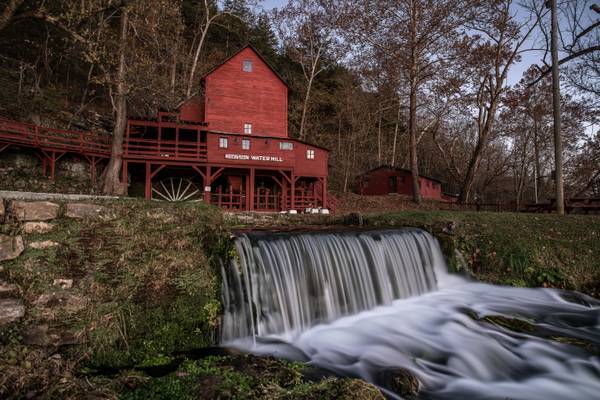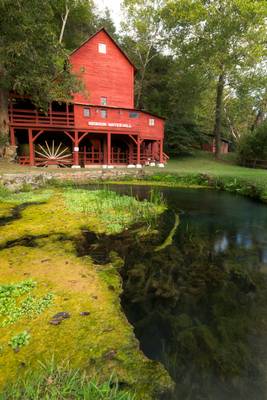
Ozark County

by Sandeep Thomas
- Martin Luther King, Jr.
|| insta || blog || photostream ||
Please press “F” if you like this image.
Before the holiday break, I talked a bit about the importance of the “mid-ground” while using an ultra-wide lens. Today’s image of the Hodgeson natural spring in southern Missouri is a good example of framing an image with a good prominence to what's in the middle of the scene. A lot of the time, I used to just plop my tripod at eye level and take pictures, and if you think about it, it is quite natural for us to do that as it is how we see things. But after a while, they started to look very dull. The fun part of landscape photography is the ability to see the landscape in your unique way.
For this image, I first tried getting lower and closer to the edge of the spring. Doing so put me close to water level, increasing the prominence of the mill and the plants on the surface. I experimented with height and polarization strength and finally settled at about 2-3 feet height. I liked how the detail in the water is equally prominent with the green on the water in this image.
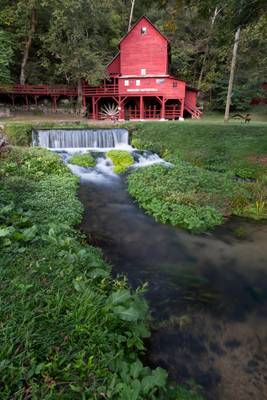
by Sandeep Thomas
- Edward Steichen.
|| insta || blog || photostream ||
When talking about framing a photograph, I am a sucker for curves. I am always on the lookout for naturally occurring curves like roads or trails, but sometimes nature only meets you halfway, and the rest need to be manufactured by the tools at hand. And in my experience, a wide-angle lens is your best friend when you want to introduce a gentle curve into your photograph.
While photographing the Hodgson mill and springs in Southern Missouri, I recently encountered this predicament. The creek that originated from the spring formed a 90-degree turn in front of the mill. Still, unfortunately, a massive tree and some overgrown bush prohibited me from taking advantage of this natural element. The best vantage point was to the right of the creek just before it curved left which made the stream look like its coming straight at the camera. I tried a couple of different compositions, but it didn’t work until it tried my wide-angle. It exaggerated the gentle curve of the stream perfectly and made the shot much more enjoyable.
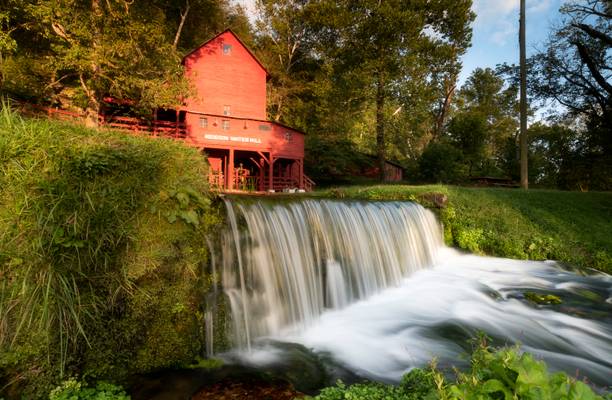
by Sandeep Thomas
- Edward Hopper.
|| insta || blog || photostream ||
Please press “F” if you like this image.
When I first heard about the Hodgson grist mill and spring, I was a little worried about it being a tourist trap. But we were pleasantly surprised by the mill and its surroundings. We only had a few fishermen by the nearby creek for company and had the place to ourselves on a beautiful summer evening. While the spring is much smaller than the Alley spring, its unique positioning gives you a lot of exciting framing opportunities.
For today's image, I got super close to the spring overflow and used the unique perspective of the wide-angle lens to create a composition dominated by the cascading water and mill. Getting the sky to remain blue was the main challenge as the mill, as the foreground was pretty dark, and I was deliberately slowing the shutter speed for the water. One of those instances where I am glad about the D850’s base iso of 64 allowed me to get the long exposure I wanted without using an ND filter. Not using an ND to slow the shutter speed meant that I could use an ND grad in an angled position to target the slightly overexposed sky specifically. I loved the resulting image.
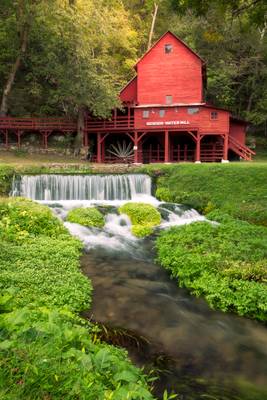
by Sandeep Thomas
- Rick Warren.
|| insta || blog || photostream ||
Please press “F” if you like this image.
Ultra wide-angle lenses are some tricky beasts to master. I own one of Nikon's bargain ultra-wides, but I have to confess it rarely replaces the 24-70 on my D850. I contemplated acquiring Nikon’s legenadary 14-24 lens for the longest time, but the very few keepers I managed with my 18-35 meant that I never pulled the trigger. I purchased my ultra-wide in 2013, and since then, I did put in a lot of effort trying to master the lens. I went over countless youtube videos and articles trying to unlock the secrets of the wide focal lengths but never managed to consistently get great results with the lens. I learned the importance of foreground interests, creating depth in your images, and getting close with the wide-angle. Still, I believe there is one more element that all these articles do not pay much attention to but is critical in making excellent wide images. And it’s the often-overlooked mid-ground.
For this image that I shot at the Hodgson grist mill, the mid-ground was very interesting, the cascading water is an instant draw to any viewer, but it also has foreground interest in the form of the grass and the stream itself. Now, if I followed traditional foreground wisdom, I would have gotten low and closer to the foreground, but that doesn’t work for this composition. My main goal for this photo was to lead the viewer’s eye to the mid and background elements in the scene. I only wanted to use the gentle curve in the stream as a leading line and didn’t want the eys to linger. So I put my tripod at its maximum height and angled the camera down. This stretches the mid-ground while still including the foreground but ensures that the mid-ground attains prominence in the scene. I hope to post a couple of more images in the coming days to examples of the same technique.
Thanks to all Phoide contributors to Ozark County!
Most notably Sandeep Thomas and Patrick Clancy.
